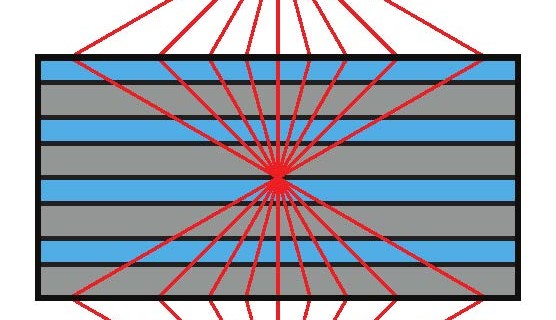Flat lens focuses ultraviolet light
June 28, 2016
on
on

Researchers at AMOLF, an institute of the FOM Foundation, have developed a new type of lens that is flat instead of curved like a conventional glass lens. The lens works on the principle of negative refraction, which was predicted by Veselago in 1968. Potential applications for the flat lens include ultra-compact optical data storage media and ultra-miniature optical instruments.
Since Veselago first predicted that light could be refracted “backwards” in a material with a negative refractive index, optics researchers have been fascinated by the idea of a flat lens. A flat lens of this sort does not have an optical axis, so it can be used for large-scale parallel imaging. This type of lens also has a focal length that is less than the wavelength of light, making many new imaging applications possible.
The new flat lens concept was inspired by the design of a hyperbolic metamaterial. The flat lens is designed to have an isotropic negative refractive index equal to -1 for all directions in the material. The researchers fabricated the flat lens, which works in the ultraviolet spectrum, from a periodic thin-film structure consisting of alternating layers of silver and titanium dioxide.
Since Veselago first predicted that light could be refracted “backwards” in a material with a negative refractive index, optics researchers have been fascinated by the idea of a flat lens. A flat lens of this sort does not have an optical axis, so it can be used for large-scale parallel imaging. This type of lens also has a focal length that is less than the wavelength of light, making many new imaging applications possible.
The new flat lens concept was inspired by the design of a hyperbolic metamaterial. The flat lens is designed to have an isotropic negative refractive index equal to -1 for all directions in the material. The researchers fabricated the flat lens, which works in the ultraviolet spectrum, from a periodic thin-film structure consisting of alternating layers of silver and titanium dioxide.
Read full article
Hide full article


Discussion (1 comment)